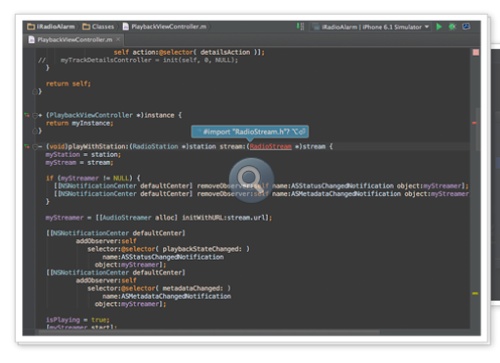

- #Jetbrains appcode 2.0 how to#
- #Jetbrains appcode 2.0 upgrade#
- #Jetbrains appcode 2.0 full#
- #Jetbrains appcode 2.0 code#
Even if AppCode 2.0 is indexing quicker than 1.x - it's still slow, and I'm not willing to wait the time just because you guys don't want to give me the freedom of having 2 Macs running the same license. Of course I want to have my favourite IDE open on both of my Macs e.g.
#Jetbrains appcode 2.0 code#
So the bug is on your side - I'm not your beta-tester.Īnother statement from you: " You do not code on both simultaneously, right?" Come on! That argument is like 15 years old. I never gave anyone my purchased license code (and never will). And no, I won't report a bug explaining everything I did, I just don't have the time. Only possible solution: pressing "no" = close AppCode.
#Jetbrains appcode 2.0 upgrade#
If there would have been, I'd never paid the upgrade for another year.Įven worse than that: I just had a situation, where I couldn't fix the license message by clicking "yes" by activating the current computer (AppCode wasn't even running on the second Mac!). I always have my IDE's opened on both of my Macs, and there never was a "Licence Collision" with AppCode 1.x. Note: we choose iOS Application and Single View Application.This behaviour is actually new in AppCode 2.0 - definitely. Selecting “File”, then “New Project” brings up the following dialog. The first thing we need to do is create our project in AppCode.
#Jetbrains appcode 2.0 how to#
In this post, we will demonstrate how to create a Swift project in JetBrains’ AppCode, eliminate the Main.storyboard, and generate a view with a button that is centered on the screen horizontally. In doing so, you may dynamically layout your screen based upon screen dimensions and business logic that dictates elements be hidden or shown. The alternative is to instantiate the UI element classes and to configure the elements’ properties in code. There’s no requirement that you use Storyboards at all. There are point and click features for connecting events to methods in your classes, though you will be switching between source code for your classes and the WYSIWYG editor to do so. This editor allows you to design the user interface for your app with a drag and drop WYSIWYG view and form based entry to configure the properties of the user interface elements. For the most part you can do your work in AppCode.

You still need to use Xcode for things like adding images to xcassets, and working with Storyboards.

You get the added bonus of JetBrains’ HTML, JavaScript, and CSS editors. JetBrains’ AppCode brings all of their excellent IDE functionality to building Objective-C and Swift applications. The interface for setting the various options for building and linking your program can be overwhelming. The editor has its own idiosyncrasies, like hitting the tab key with a range of lines selected replaces the lines with a tab character instead of the expected behavior of indenting the lines.
#Jetbrains appcode 2.0 full#
If you’ve ever set up a continuous integration system, you’re familiar with the command line tools.Īpple’s Xcode is a full featured IDE for developing C, C++, Objective-C, and Swift applications. You can use a traditional text editor (like vim or emacs) to edit your source and use the command line compilers to compile and build your application. There are at least three ways to develop GUI applications for iOS and OSX. Swift has a much easier syntax to learn than Objective-C, and is more secure and less prone to latent bugs like stack overflow errors. Apple announced Swift at WWDC a year ago and Swift 2.0 at this year’s WWDC. For years, the only language for developing UI applications for OSX and iOS was Objective-C and the only IDE was Apple’s Xcode.


 0 kommentar(er)
0 kommentar(er)
